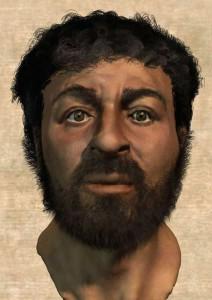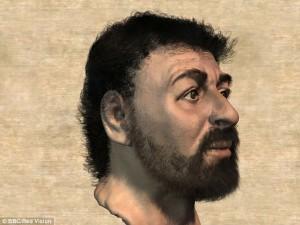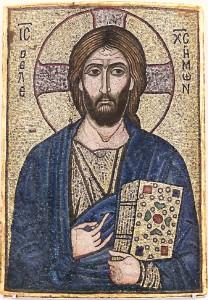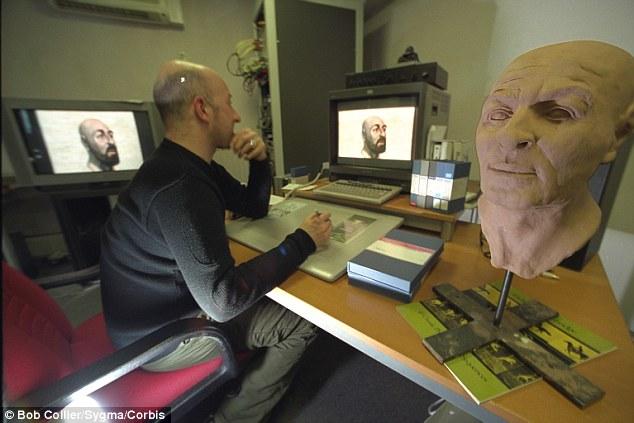What Did Jesus of Nazareth Really Look Like? 3D Modeling Helps an Anthropologist Get Closer to the Truth
I went to Catholic school for twelve years, so I was often surrounded by pictures of Jesus. His likeness was depicted by a variety of artists, in a variety of styles, but most of the images seemed to have one thing in common: they showed Jesus as a light-skinned, often fair-haired man who sometimes had blue eyes. I didn’t think anything of it in early elementary school, but at some point, as I got older, the question arose: if Jesus was from Israel, why does he always look so Caucasian in pictures?
That question is fuel for a lot of discussion about race and religion, but I won’t get into the deeper issues behind traditional Western depictions of Christ at this time. While most paintings of religious figures come from the imaginations of their creators, a retired medical artist named Richard Neave has created a series of images of Jesus that may be the most accurate yet. How did he do it? Science, of course.
Neave, who is retired from the University of Manchester, has been working with a technique called forensic anthropology for about 20 years. He detailed the technique in the book Making Faces: Using Forensic and Archaeological Evidence. It’s a relatively new field that has arisen as technology has advanced, and it’s sort of like solving a puzzle. It’s often used to identify long-buried remains, as well as to shed new light on century-old crimes. In Neave’s case, he uses it to ascertain, as closely as possible, what ancient historical figures may have looked like.
Neave, of course, didn’t have the actual remains of Jesus to work with, but he was able to obtain the skulls of three of Jesus’ contemporaries. Israeli archaeologists have uncovered remains of Semites from the Jerusalem region, dated back to the time of Christ. Neave borrowed three of the skulls and used computerized tomography to create thin X-ray slices that allowed him to study the smallest details of their structures. Specialized computer programs used information about the thickness of tissue on key areas of the human face to create muscles and skin over the digital images of the skulls, and additional specialized software was used to verify the results against anthropological data.
Next came 3D modeling. Using the data gathered from the three skulls, Neave and his team created a detailed 3D model, which they then used to build a clay cast of the skull. Features such as the nose, lips and eyelids were added by following the shape created by the underlying muscles.
 Since Jesus’ hair and coloring couldn’t be determined from the scans, Neave used drawings, dated back to the first century, that had been found at multiple archaeological sites to confirm that an Israeli man in Jesus’ time would have been dark-eyed and dark-skinned. Jewish custom of the time also indicates that he would have been bearded. Another departure from traditional depictions of Jesus came from the Bible itself: while he is typically shown with long hair, a Bible passage from Paul describes long hair on a man to be a “disgrace” – not exactly something Jesus’ most devoted disciple would have said about his master.
Since Jesus’ hair and coloring couldn’t be determined from the scans, Neave used drawings, dated back to the first century, that had been found at multiple archaeological sites to confirm that an Israeli man in Jesus’ time would have been dark-eyed and dark-skinned. Jewish custom of the time also indicates that he would have been bearded. Another departure from traditional depictions of Jesus came from the Bible itself: while he is typically shown with long hair, a Bible passage from Paul describes long hair on a man to be a “disgrace” – not exactly something Jesus’ most devoted disciple would have said about his master.
The tall, thin figure depicted in paintings is also likely inaccurate. Analysis of skeletal remains from the time indicate that Jesus would have been about 5″1′, 110 pounds, and fairly muscular due to his profession as a carpenter.
While forensic anthropology is not an exact science, most experts have agreed that Neave’s depiction is likely much more accurate than the majority of images produced by artists. And it’s an important reminder, according to Charles D. Hackett, director of Episcopal studies at the Candler School of Theology at Emory University.
“The fact that he probably looked a great deal more like a darker-skinned Semite than westerners are used to seeing him pictured is a reminder of his universality,” said Hackett. “And [it is] a reminder of our tendency to sinfully appropriate him in the service of our cultural values.”
What are your thoughts on this use of 3D Printing. Discuss in the 3D Printing Jesus forum thread on 3DPB.com.
Subscribe to Our Email Newsletter
Stay up-to-date on all the latest news from the 3D printing industry and receive information and offers from third party vendors.
You May Also Like
3D Printing Financials: Fathom Struggles in Financial Quicksand During Critical Transition
Facing a year of key transitions and financial pressures, Fathom (Nasdaq: FTHM) has filed its annual report for 2023 with the U.S. Securities and Exchange Commission (SEC). The document outlines...
Latest Earnings Overview for Australian 3D Printing Firms Titomic and AML3D
Australian 3D printing manufacturing firms Titomic (ASX: TTT) and AML3D (ASX: AL3) reported their financial results for the period from July to December 2023, marking the first half of their...
3D Printing Webinar and Event Roundup: April 7, 2024
Webinars and events in the 3D printing industry are picking back up this week! Sea-Air-Space is coming to Maryland, and SAE International is sponsoring a 3D Systems webinar about 3D...
3D Printing Financials: Unpacking Farsoon and BLT’s 2023 Performance
In the Chinese 3D printing industry, two companies, Farsoon (SHA: 688433) and Bright Laser Technologies, or BLT (SHA: 688333), have recently unveiled their full-year earnings for 2023. Farsoon reported increases...


































